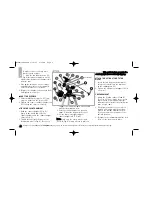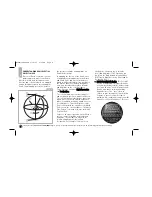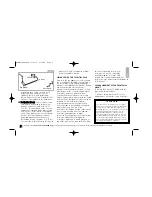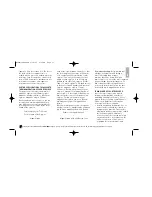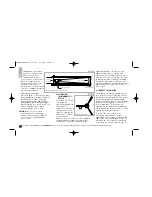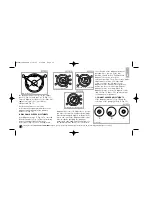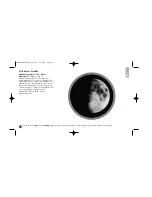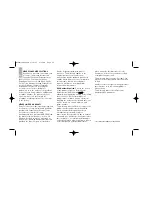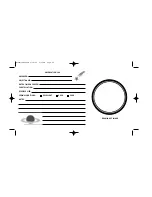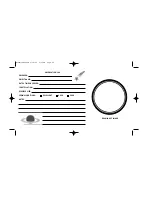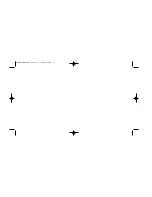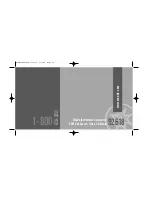
appear centered within the drawtube
(3, Fig. 15), but the reflection of your
eye and the reflection of the diagonal
mirror (4, Fig. 15) appear off center,
you will need to adjust the primary mirror
tilt Phillips-head screws of the primary
mirror cell (3, Fig. 10). These primary tilt
screws are located behind the primary
mirror, at the lower end of the main tube.
To adjust the primary mirror tilt screws,
first unscrew several turns, the 3 hex-head
primary mirror cell locking screws (2, Fig.
10) that are next to each primary mirror tilt
Phillips-head screw. Then by trial-and-
error, turn the primary mirror tilt Phillips-
head screws (3, Fig. 10) until you develop a
feel for which way to turn each screw to
center the reflection of your eye. Once
centered, as in Fig. 13, turn the 3 hex-head
primary mirror cell locking screws (2, Fig.
10) to relock the tilt-angle adjustment.
D. STAR TESTING THE COLLIMATION
With the collimation performed, you will
want to test the accuracy of the alignment
on a star. Use the 25mm eyepiece and point
the telescope at a moderately bright
(second or third magnitude) star, then
center the star image in the telescope's
field-of-view. With the star centered follow
the method below:
• Bring the star image slowly out of focus
until one or more rings are visible
around the central disc. If the collimation
was performed correctly, the central
star disk and rings will be concentric
circles, with a dark spot dead center
within the out-of-focus star disk (this is
the shadow of the secondary mirror), as
shown in Fig. 16C. (An improperly
aligned telescope will reveal elongated
circles (Fig. 16A), with an off-center
dark shadow.)
• If the out-of-focus star disk appears
elongated (Fig. 16A), you will need to
adjust the primary mirror Phillips-head
tilt screws of the primary mirror cell
(3, Fig. 12)
• To adjust the primary mirror tilt screws
(3, Fig. 12), first unscrew several turns
the 3 hex-head primary mirror cell
locking screws (2, Fig. 12), to allow free
turning movement of the tilt knobs.
• Using the flexible cable controls move
the telescope until the star image is at
the edge of the field-of-view in the
eyepiece, as in Fig. 16B.
• As you make adjustments to the primary
mirror tilt screws (3, Fig. 12), you will
notice that the out-of-focus star disk
image will move across the eyepiece
field. Choose one of the 3 primary mirror
tilt screws and slightly move the shadow
to the center of the disk. Then slightly
move the telescope using the flexible
cable controls to center the star disk
image in the center of the eyepiece.
• If any further adjustments are necessary,
repeat this process as many times as
needed until the out-of-focus star disk
appears as in Fig. 16C, when the star
disk image is in the center of the
eyepiece field.
• With the star testing of the collimation
complete, tighten the 3 hex-head
primary mirror locking screws
(2, Fig. 12)
18
Looking at or near the
Sun
will cause
irreversible
damage to your eye. Do not point this telescope at or near the Sun. Do not look through the telescope as it is moving.
Meade114EQASTR 3/28/07 9:33 AM Page 20
Содержание 114EQ-ASTR
Страница 27: ...Meade114EQASTR 3 28 07 9 33 AM Page 27 ...

